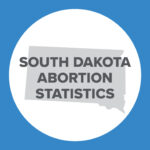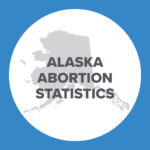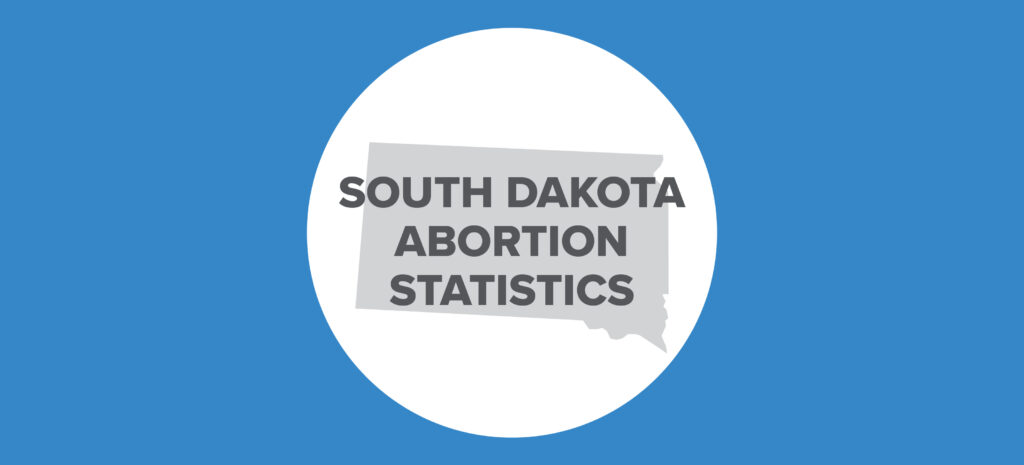Abortion Reporting: South Carolina (2018)
South Carolina’s 2018 abortion report was released in July 2019. The report was published online by the South Carolina Department of Health and Environmental Control.
Changes in South Carolina Abortions, 2017-2018

Abortion Totals and Trends
In 2018, 4,646 abortions were reported in South Carolina, down nine percent from the previous year and down 24 percent from 2012 (Fig. 1). 2018 marked the second year South Carolina reported the types of abortion procedures used in the state. There were 2,580 chemical abortions in 2018, a drop of 13 percent from the 2,949 reported the year before. Chemical abortions made up 56 percent of all abortions reported in South Carolina in 2018. CLI estimates that South Carolina’s abortion rate fell from 5.3 abortions per 1,000 women of reproductive age in 2017 to 4.8 in 2018 (Fig. 2). Planned Parenthood performed 55 percent of the abortions reported in South Carolina in 2018.
State Report Summary
Fifty-eight percent of the abortions reported in South Carolina were performed on women in their twenties. Twenty-nine percent were on women ages 20 to 24 and another 29 percent on women ages 25 to 29. Ten percent were performed on women and girls under the age of 20, while 18 percent were performed on women ages 30 to 34 and 14 percent on women ages 35 and older.
Over half the abortions reported in South Carolina, 56 percent, occurred between seven and 13 weeks probable post-fertilization (PPF) age. Forty-four percent were performed at six weeks or earlier. In contrast, 11 abortions were performed between 14 and 19 weeks PPF. There were six abortions performed between 20 and 23 weeks post-fertilization, when unborn babies can feel pain. No abortions were reported after 23 weeks. In each case, an ultrasound was used to determine probable post-fertilization age as required by law.
The most frequently used method of abortion was chemical abortion, accounting for 56 percent of the abortions reported in South Carolina. Thirty-two percent were vacuum aspiration abortions (just over 28 percent manual and a little over three percent electric). Twelve percent were performed using dilation and curettage. There were 13 dilation and evacuation abortions and five induction abortions, four of which involved prostaglandins and one of which was performed along with dilation and evacuation. In advance of five abortions, an intra-fetal injection was administered to kill the baby.
Information on South Carolina abortion facilities is not included in the published state abortion report, but these statistics were provided to the Charlotte Lozier Institute upon request. In 2018, 55 percent of South Carolina abortions were performed at Planned Parenthood’s two South Carolina abortion centers in Charleston and Columbia, up from the 32 percent reported by the Columbia center in 2017. Before 2018, Planned Parenthood’s Charleston location did not perform abortions. Then an independent abortion clinic in Charleston – Charleston Women’s Medical Center – closed in 2017 and was purchased by Planned Parenthood. Planned Parenthood closed its other Charleston center and began performing abortions in the old Charleston Women’s Medical Center building in 2018.
Almost 45 percent of South Carolina abortions occurred at the Greenville Women’s Clinic. The remaining 34 abortions were performed at five South Carolina hospitals.
In addition to the annual abortion report, which reports all abortions performed in South Carolina on residents and nonresidents alike, South Carolina maintains an online vital statistics database with information on abortions performed on South Carolina residents in South Carolina, North Carolina, or Georgia. The vital statistics database contains additional information on abortions performed on resident women in these three states, including women’s race, marital status, level of education, and county of residence. However, resident data for 2018 is not yet available.
Abortions After 20 Weeks
In South Carolina, abortions after 20 weeks post-fertilization are prohibited unless the mother is experiencing a medical emergency or the baby has an anomaly. A medical emergency is considered to be a serious risk to a woman’s life or a major bodily function, and a fetal anomaly means a fatal condition that the baby is not expected to survive.
In 2018, there were six abortions reported in South Carolina after 20 weeks PPF. All six of these late-term abortions were performed because the baby had an abnormality. Three of these were chemical abortions, and the other three were induction abortions with prostaglandins. In every case, the doctor performing the abortion indicated that the abortion method chosen gave the unborn baby the greatest chance of survival. Some abortion advocates encourage the use of mifepristone and misoprostol and other methods of labor induction in second-trimester abortions for fetal anomaly, citing psychological benefits to the mother among other reasons. However, research has shown that women who choose abortion when their babies have abnormalities often suffer worse psychological outcomes than women who choose to carry their pregnancies to term.
State Ranking
In CLI’s 2016 survey of abortion reporting across the 50 states, New York City, and the District of Columbia, South Carolina’s abortion reporting tied for 28th best. Since then, South Carolina has increased the accessibility of its abortion data, including information on the types of procedures used. Still, South Carolina could improve its reporting further. The vital statistics database provides valuable information on resident abortions that South Carolina does not currently incorporate into its abortion report but could incorporate in future reports. South Carolina could also report whether any women suffer complications after undergoing abortions in the state as well as the specific anomalies that are used to justify abortions after 20 weeks and whether any babies are born alive.
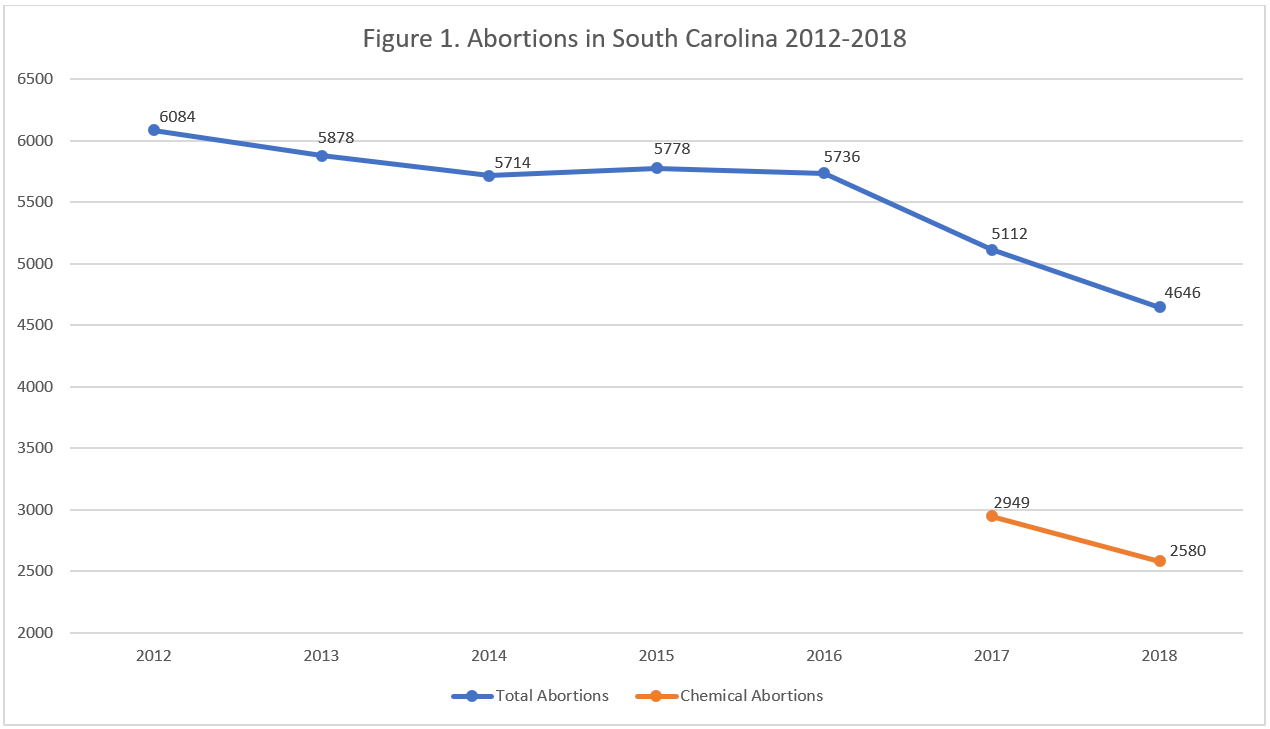
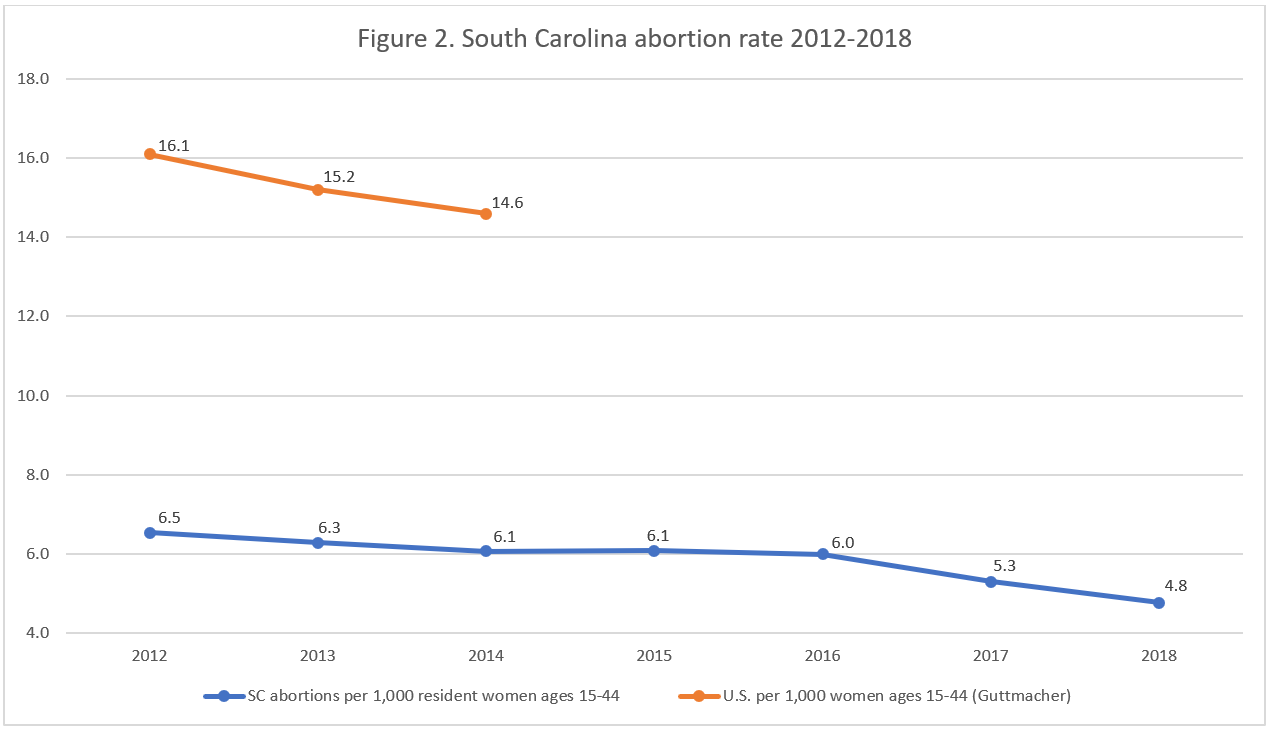
- Starting with the 2018 abortion reports, abortion rates are calculated by the Charlotte Lozier Institute to allow for easier state-to-state and year-to-year comparisons. Rates were calculated by CLI using population estimates from the United States Census Bureau. The rates were calculated using the following formula: (total number of abortions performed in South Carolina ÷ number of resident women ages 15-44) x 1,000. Rates may differ slightly from previous CLI articles due to revised population estimates.










